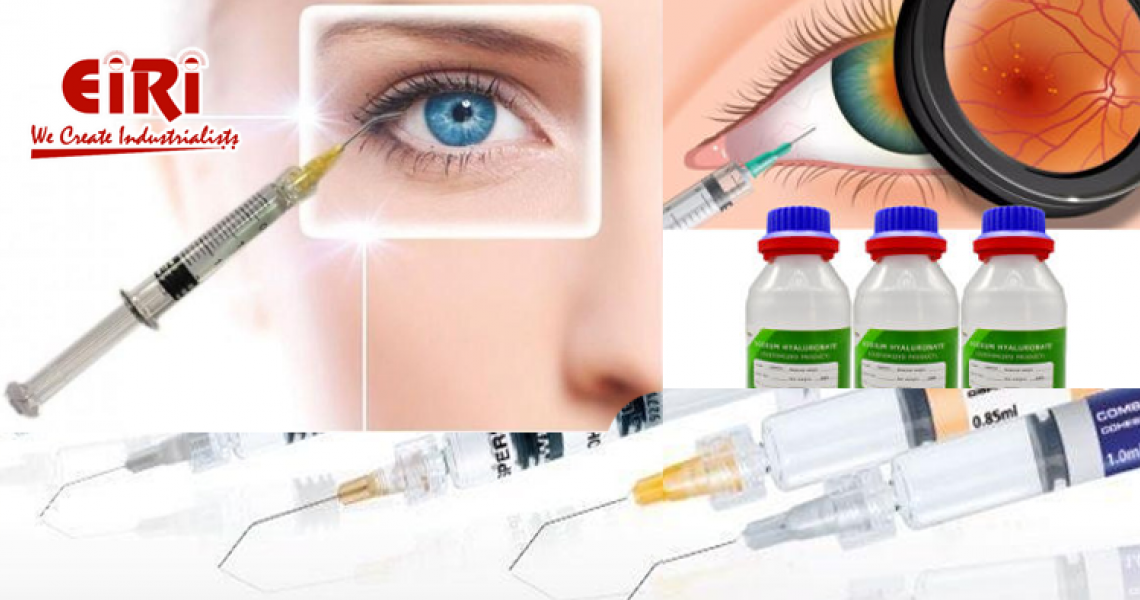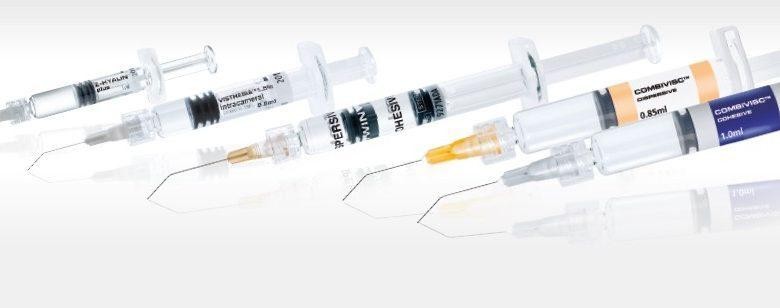Viscoelastic Devices and Solutions - Complete Guide for Entrepreneurs

In the dynamic landscape of technological advancements, entrepreneurs are continually seeking innovative solutions to address complex challenges. One such frontier that holds immense potential is the realm of viscoelastic devices and solutions. This comprehensive guide aims to unravel the possibilities and opportunities presented by viscoelastic technologies, providing entrepreneurs with insights into their applications, benefits, and the transformative impact they can have across various industries.
From understanding the fundamental principles of viscoelasticity to exploring cutting-edge devices and solutions, entrepreneurs will embark on a journey that transcends traditional boundaries. We'll delve into the diverse applications of viscoelastic materials, spanning from healthcare and manufacturing to groundbreaking technological advancements. As the entrepreneurial spirit thrives on embracing the latest technologies, this guide will empower visionaries to navigate the complexities of viscoelasticity, fostering a new era of innovation and business growth.
Viscoelastic Devices/Ophthalmic Viscoelastic Device (OVD)
Viscoelastic devices are innovative tools designed to harness the unique properties of viscoelastic materials for specific applications. Viscoelasticity refers to the combination of viscous (liquid-like) and elastic (solid-like) behavior exhibited by certain materials under stress or deformation.
Ophthalmic Viscoelastic Devices (OVDs) are typically pre-packaged in syringes and applied using a small tube. Their essential properties are closely linked to physicochemical and rheological characteristics. The market offers various types of OVDs, such as higher viscosity cohesive OVD and lower viscosity dispersive OVD. Notably, this segment excludes OVDs with both cohesive and dispersive viscoelastic properties, focusing on Cohesive OVDs, Dispersive OVDs, and Viscoadaptive OVDs.

The industry is experiencing a boost due to favorable government initiatives worldwide, aiming to establish guidelines for controlling the rise in vision impairment. This encouragement has led product manufacturers to introduce innovative ophthalmic devices to the market. Additionally, the increasing number of eye surgeries, a surge in cataract and glaucoma prevalence, and a growing geriatric population contribute significantly to market expansion. Despite these positive trends, challenges such as the high cost of ophthalmic surgeries and limited accessibility to eye care in low-income countries may impede the industry's growth.
Applications in Medicine:
One significant application is in the field of medicine, particularly in surgical procedures. Viscoelastic devices, such as viscoelastic substances used in ophthalmic surgery, play a crucial role in maintaining the shape of the eye during surgery. They enhance surgical precision, minimize trauma, and contribute to better patient outcomes.
Joint Prosthetics:
In orthopedics, viscoelastic materials are employed in joint prosthetics. These materials mimic the natural biomechanics of joints, providing a more natural range of motion and absorbing shock. This enhances the durability and performance of joint prosthetics, improving the quality of life for individuals with joint replacements.
Seismic Dampers:
In civil engineering, viscoelastic devices are used as seismic dampers to mitigate the impact of earthquakes on structures. These devices absorb and dissipate seismic energy, reducing the stress on buildings and infrastructure during seismic events.
Market Overview of Viscoelastic Devices
The industry expected to increase from USD 0.66 billion in 2023 to USD 1.29 billion by 2030.
In 2022, the market size of Ophthalmic Viscoelastic Devices reached USD 0.60 billion. Projections indicate substantial growth, with the industry expected to increase from USD 0.66 billion in 2023 to USD 1.29 billion by 2030. This represents a notable compound annual growth rate (CAGR) of 11.60% during the forecast period from 2023 to 2030. Key factors fueling this growth include the global increase in cataract and glaucoma prevalence, heightened government initiatives to combat visual impairment, and a rise in the number of ophthalmic surgeries.
Viscoelastic Devices Market Trends
Ophthalmic Viscoelastic Devices (OVDs) have witnessed a surge in demand, propelled by the rising number of ophthalmic surgeries, including cataract surgery, glaucoma surgery, and corneal transplant surgery. As surgical techniques and technologies advance, the safety and efficacy of ophthalmic surgeries have increased, resulting in a higher volume of surgeries each year. This upward trend in surgical procedures has significantly boosted the demand for OVDs.
Surgeons commonly utilize OVDs to protect delicate eye structures during surgery, such as the corneal endothelium and iris. These devices play a crucial role in maintaining space in the eye and safeguarding it from potential damage during surgical procedures. The increased adoption of OVDs by ophthalmic surgeons, driven by their positive experiences and trust in achieving optimal outcomes, further contributes to the growing demand for these devices.
Corneal transplant surgeries, a key application of OVDs, have witnessed a substantial rise, indicated by statistics from the Eye Bank Association of America and the increasing number of LASIK surgeries in the United States. For instance, in 2018, there were 85,441 tissue transplants (corneal transplants) for keratoplasty, representing a 1.4% increase from the previous year. The growing prevalence of eye diseases and the rising awareness of ocular illnesses have led to better access to eye care facilities, resulting in a surge in the number of ocular surgeries and subsequently driving the demand for OVDs.
As surgical techniques continue to evolve, and the prevalence of ocular diseases remains high, the market for OVDs is poised for continuous growth. Additionally, government and non-governmental funding programs supporting ocular procedures are anticipated to further fuel the expansion of the OVD market. The future outlook for OVDs remains optimistic, with their indispensable role in enhancing surgical outcomes and contributing to the broader landscape of ophthalmic care.
Viscoelastic Solutions
Viscoelastic solutions encompass a wide range of materials and formulations designed to exhibit viscoelastic behavior. These solutions find applications across various industries, each tailored to specific needs.
Polymer Blends:
In material science, researchers often develop viscoelastic solutions through the blending of polymers with specific rheological properties. These blends can be customized to achieve desired characteristics, such as flexibility, damping capacity, and resilience.
Consumer Products:
Viscoelastic solutions are prevalent in consumer products like mattresses and shoe insoles. Memory foam, a popular viscoelastic material, conforms to body shape under the influence of heat and pressure, providing comfort and support.
Industrial Damping Solutions:
Industries use viscoelastic solutions for damping vibrations in machinery. These solutions absorb and dissipate vibrational energy, reducing noise and preventing structural damage caused by repetitive mechanical motions.
Biomedical Applications:
In the biomedical field, viscoelastic solutions are used in drug delivery systems. The controlled release of drugs from viscoelastic carriers ensures sustained therapeutic effects and improved patient compliance.
Viscoelastic devices and solutions showcase the versatility of materials that exhibit both viscous and elastic characteristics. From medical advancements to engineering solutions and everyday consumer products, the applications of viscoelasticity continue to evolve, contributing to enhanced performance and efficiency across various industries.
Also know as Orthopaedic Viscoelastic Supplement or Viscosupplements
The orthopaedic viscoelastic supplement market revolves around the use of gel-like substances, known as viscosupplements, injected into joints to alleviate pain and enhance joint function in individuals with osteoarthritis. Typically comprised of hyaluronic acid, a natural synovial fluid component, these supplements aim to lubricate joints.
Anticipating a promising future outlook, the orthopaedic viscoelastic supplement market is poised for growth. Fueled by the rising prevalence of osteoarthritis and an aging population, there's an expected surge in demand for viscosupplements. Technological advancements and product innovations, such as the development of convenient single-injection viscosupplements, are contributing to this upward trajectory.
Currently, the market presents a positive outlook, marked by steady growth. Factors driving this growth include increasing awareness about non-surgical treatment options, a rise in healthcare expenditure, and the availability of reimbursement policies for viscosupplement injections. Moreover, there's a noticeable shift towards next-generation viscosupplements, offering enhanced efficacy and prolonged effects.
Despite the optimistic landscape, the market is competitive, dominated by key players employing strategies like collaborations, mergers, acquisitions, and product launches to fortify their market presence and expand portfolios. However, challenges such as the high cost of viscosupplement injections and potential side effects pose hindrances to market growth.
The orthopaedic viscoelastic supplement market is primed for substantial growth in the forecasted period, driven by factors like the increasing prevalence of osteoarthritis and continuous advancements and innovations in technology and products.
Biomedical Applications of Viscoelastic Solutions:
Viscoelastic solutions play a pivotal role in biomedical applications, particularly in the realm of drug delivery systems. Their unique properties make them valuable for ensuring controlled and sustained release of pharmaceutical agents. Here's an exploration of their significance in the biomedical field:
Drug Delivery Systems:
- Sustained Release Mechanism: Viscoelastic solutions serve as effective carriers for drug delivery due to their viscoelastic properties. These solutions can encapsulate drugs, allowing for a controlled and sustained release over an extended period.
- Enhanced Therapeutic Efficacy: The controlled release of drugs from viscoelastic carriers ensures a consistent concentration of the therapeutic agent in the bloodstream. This, in turn, enhances the efficacy of the treatment and reduces the need for frequent administrations.
- Improved Patient Compliance: The sustained release mechanism contributes to better patient compliance by minimizing the frequency of drug administrations. Patients benefit from a more convenient and less invasive treatment regimen, leading to improved adherence to prescribed medications.
Localized Drug Delivery:
- Targeted Therapies: Viscoelastic solutions can be designed to provide targeted drug delivery to specific sites within the body. This is particularly advantageous for treating localized conditions or diseases in a specific organ or tissue.
- Reduced Systemic Side Effects: By delivering drugs directly to the intended site, viscoelastic carriers minimize systemic exposure, reducing the risk of side effects on non-targeted tissues and organs.
Biocompatibility and Safety:
- Biocompatible Properties: Viscoelastic solutions are often biocompatible, meaning they are well-tolerated by the body without causing adverse reactions. This property is crucial for biomedical applications where compatibility with biological systems is paramount.
- Minimized Toxicity: The use of viscoelastic solutions as drug carriers can contribute to minimizing the toxicity associated with certain drugs. Controlled release allows for therapeutic doses while avoiding peaks that may lead to toxicity.
Innovations in Drug Formulations:
- Customized Formulations: Researchers continue to explore innovative formulations of viscoelastic drug carriers. Tailoring the rheological properties of these solutions allows for the customization of drug release profiles, addressing the specific requirements of different medications and therapeutic scenarios.
- Integration with Nanotechnology: Viscoelastic solutions can be integrated with nanotechnology to create advanced drug delivery systems. Nanoparticles embedded in viscoelastic carriers enable precise control over drug release kinetics and enhance the overall efficiency of drug delivery.
In conclusion, the application of viscoelastic solutions in drug delivery systems showcases their potential to revolutionize the field of medicine. From improving treatment outcomes to enhancing patient compliance, these solutions contribute to the advancement of biomedical technologies with a focus on personalized and targeted therapies.










